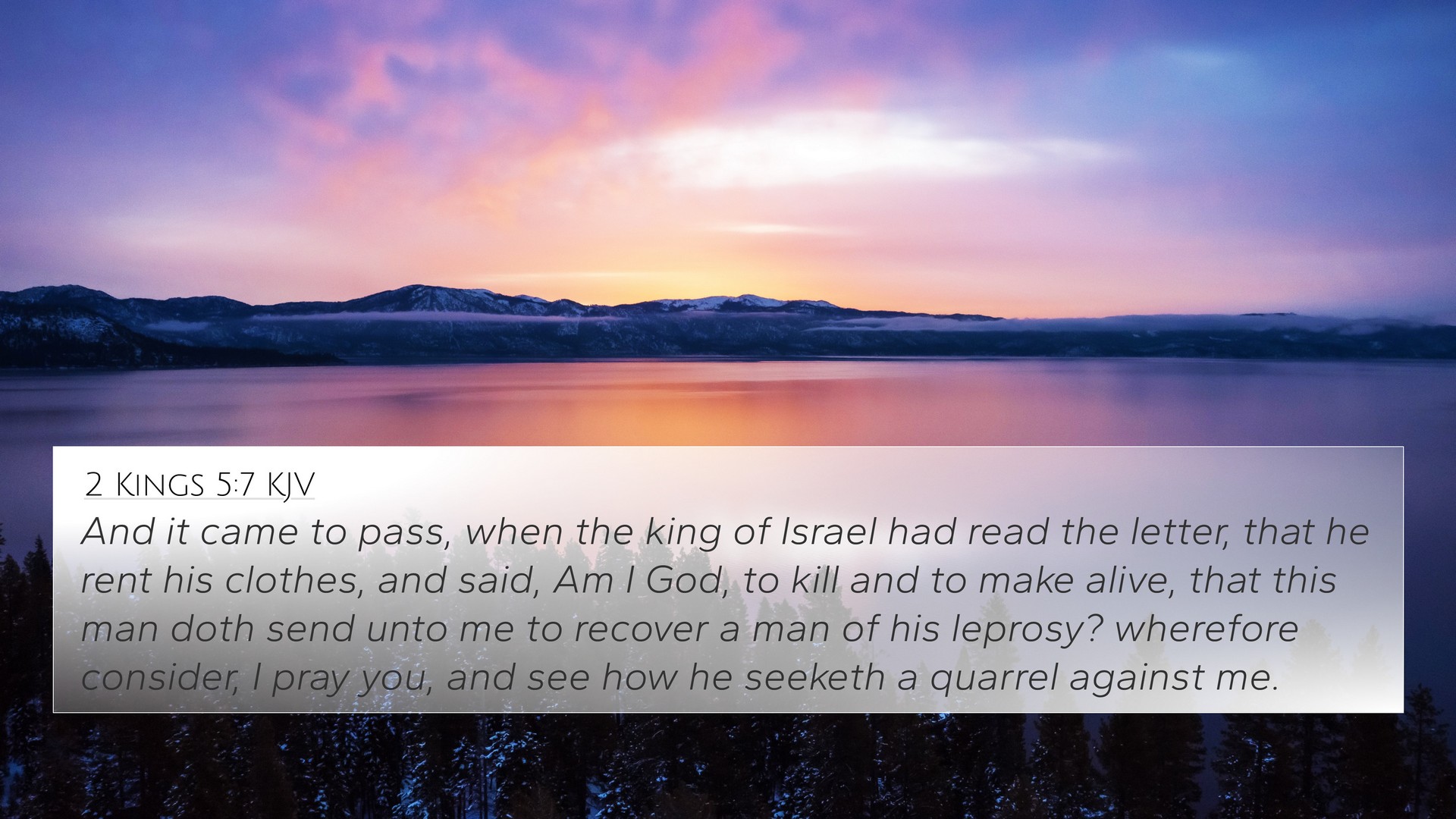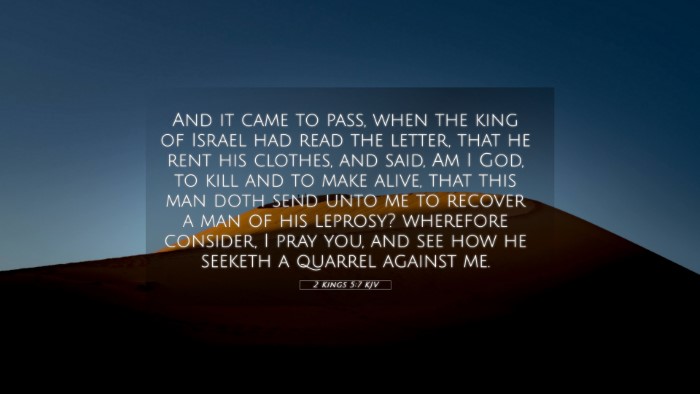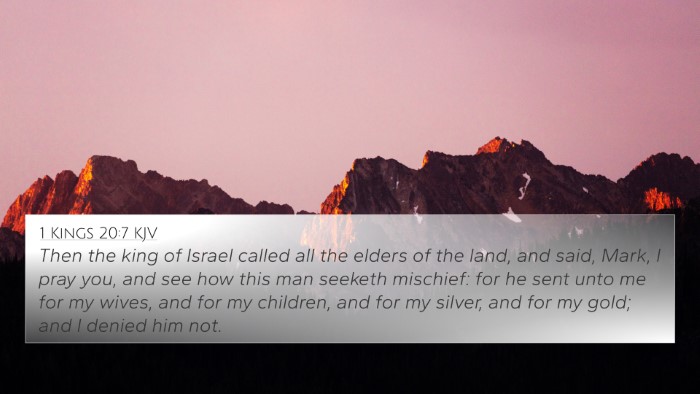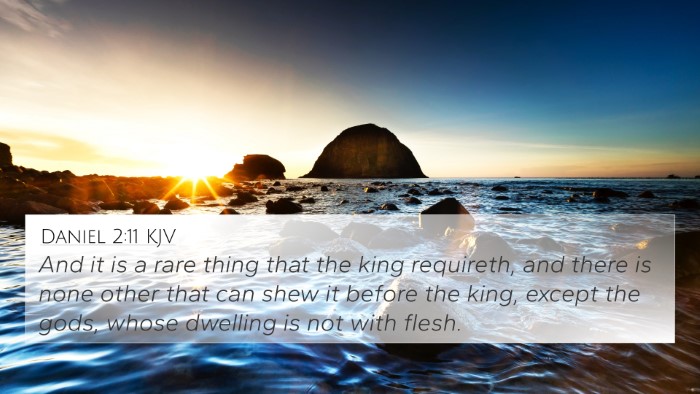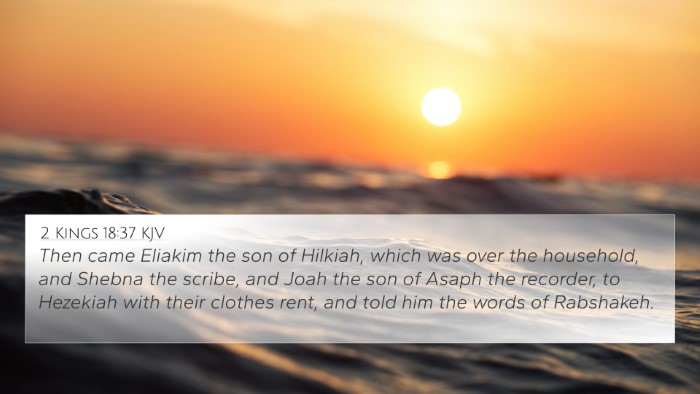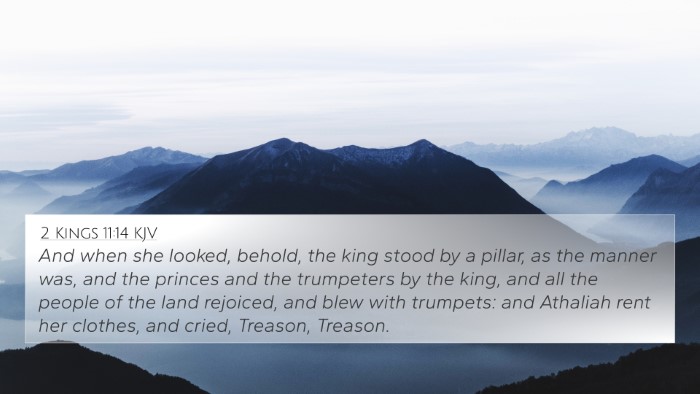Understanding 2 Kings 5:7
Verse: "And it came to pass, when the king of Israel had read the letter, that he rent his clothes, and said, Am I God, to kill and to make alive, that this man doth send unto me to recover a man of his leprosy? wherefore consider, I pray you, and see how he seeketh a quarrel against me." (2 Kings 5:7 KJV)
Overview of the Context
This verse occurs in a narrative about Naaman, a commander of the army of the king of Syria, who seeks healing from leprosy. The king of Syria sends Naaman to the king of Israel with a letter requesting the healing of Naaman. The response from the king of Israel illustrates his despair and confusion regarding the situation.
Meaning and Insights from Public Domain Commentaries
Matthew Henry's Commentary
Henry emphasizes the king's distress upon reading the letter, interpreting it as a moment of panic and an expression of his limitations as a human ruler. He notes that the king's reaction—renting his clothes—was a sign of grief and indicates that he felt ill-equipped to perform a miracle of healing, which is reserved for God alone. This response highlights the gap between human authority and divine capability.
Albert Barnes' Notes
Barnes discusses the implications of the king’s statement, "Am I God?" pointing out that the king understood the authority and power of God in matters such as life, death, and healing. He reflects on the king’s interpretation of the letter as a challenge, perceiving it as a trap set by the king of Syria to create conflict between the nations. Barnes points out that this reaction demonstrates a lack of faith in the possibility of divine intervention through God's prophet, Elisha.
Adam Clarke's Commentary
Clarke expands on the emotional state of the king, expressing that his tearing of clothes symbolized despair and bewilderment. He remarks on the cultural significance of such an action, indicating deep sorrow and fear of failure. Clarke notes that the king’s fear may not have been unfounded, as he was aware of the geopolitical tensions and the seriousness with which the Syrian king approached his request.
Thematic Bible Verse Connections
This verse allows for deep exploration and connections through various biblical themes:
- Faith and Healing: The contrast between human doubt and God's power to heal.
- Authority of God: The acknowledgment that ultimate authority belongs to God.
- Political Tensions: The diplomatic entanglements present in ancient Israel's relations with surrounding nations.
Related Bible Cross References
- 2 Kings 4:27: The story of Elisha and the Shunammite woman, showcasing God's ability to bring life.
- 1 Kings 8:39: Solomon’s prayer for healing, recognizing God's omnipotent control over life and death.
- Luke 4:27: Jesus references Naaman’s healing, connecting to the New Testament's revelation of God’s mercy.
- James 5:14-15: Anointing the sick and prayer’s role in healing through faith.
- Matthew 9:12-13: Jesus’ declaration of His mission to heal those who are spiritually sick, paralleling the physical healing in 2 Kings.
- John 9:3: Jesus addressing suffering and disability as opportunities for God's works to be manifest.
- Psalm 30:2: A prayer for help and acknowledgment of divine healing.
- Isaiah 53:5: The prophetic declaration of healing through suffering, connecting physically and spiritually.
- Romans 8:28: God's providence in all circumstances, including health and affliction.
- Hebrews 11:6: The necessity of faith in approaching God for help, noting that without faith it is impossible to please Him.
Conclusion
2 Kings 5:7 serves as a poignant reminder of the tension between human limitations and divine power. The verse illustrates the emotions of despair and helplessness faced by the king of Israel, intersecting with themes of faith, authority, and the healing power of God. It encourages believers to rely on faith and seek God's intervention in situations beyond human control.
For those studying this verse, the connections provided by these public domain commentaries enrich the understanding of not only this particular scripture but also how it interacts with a broader biblical narrative. Utilizing tools for Bible cross-referencing can open avenues for deeper comprehension and appreciation of the scripture.
